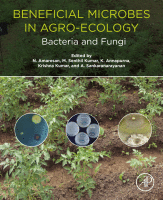Ver ítem
- xmlui.general.dspace_homeCentros Regionales y EEAsCentro Regional Tucumán - Santiago del EsteroEEA FamailláPartes de librosxmlui.ArtifactBrowser.ItemViewer.trail
- Inicio
- Centros Regionales y EEAs
- Centro Regional Tucumán - Santiago del Estero
- EEA Famaillá
- Partes de libros
- Ver ítem
Chapter 6 - Azospirillum
Resumen
The genus Azospirillum belongs to the α-subclass of Proteobacteria and has been considered an important genus among the plant growth-promoting bacteria. The occurrence of Azospirillum species is widespread in the environment, including tropical, subtropical, and temperate regions; most of them were described from plant roots and soil samples. Some members of the genus Azospirillum are recognized as biofertilizers owing to their plant growth-promoting
[ver mas...]
The genus Azospirillum belongs to the α-subclass of Proteobacteria and has been considered an important genus among the plant growth-promoting bacteria. The occurrence of Azospirillum species is widespread in the environment, including tropical, subtropical, and temperate regions; most of them were described from plant roots and soil samples. Some members of the genus Azospirillum are recognized as biofertilizers owing to their plant growth-promoting activities, such as the biologic nitrogen fixation, hormones production, phosphate solubilization, and siderophore production. Also, it has biocontrol activity of phytopathogens. All these features make some species of Azospirillum attractive for using in agricultural important crops. In this chapter an updated status of the genus Azospirillum and its role in agroecology is presented, including taxonomy, isolation and identification strategies, plant growth-promoting characteristics, biofilm formation, and root colonization, as well as the use as biofertilizer, abiotic stress tolerance induction, bioremediation, biofortification, and the activity as a biocontrol agent.
[Cerrar]

Autor
Pedraza, Raúl Osvaldo;
Filippone, María Paula;
Fontana, Cecilia Alejandra;
Salazar, Sergio Miguel;
Ramírez-Mata, Alberto;
Sierra-Cacho, Daniel;
Baca, Beatriz E.;
Fuente
Beneficial Microbes in Agro-Ecology : Bacteria and Fungi / Editors: N. Amaresan, M. Senthil Kumar, K. Annapurna, Krishna Kumar, A. Sankaranarayanan. Estados Unidos: Academic Press, 2020. p. 73-105
Fecha
2020-05
Editorial
Academic Press
ISBN
978-0-12-823414-3
978-0-12-823558-4
978-0-12-823558-4
Formato
pdf
Tipo de documento
parte de libro
Palabras Claves
Derechos de acceso
Restringido
 Excepto donde se diga explicitamente, este item se publica bajo la siguiente descripción: Creative Commons Attribution-NonCommercial-ShareAlike 2.5 Unported (CC BY-NC-SA 2.5)
Excepto donde se diga explicitamente, este item se publica bajo la siguiente descripción: Creative Commons Attribution-NonCommercial-ShareAlike 2.5 Unported (CC BY-NC-SA 2.5)

